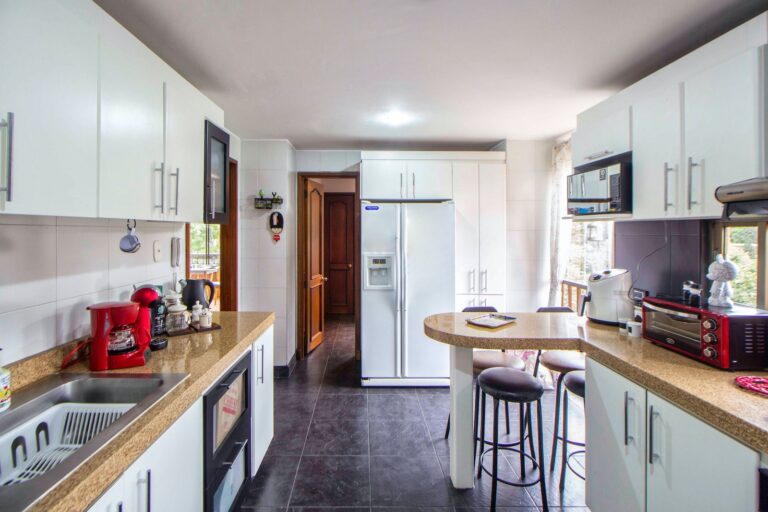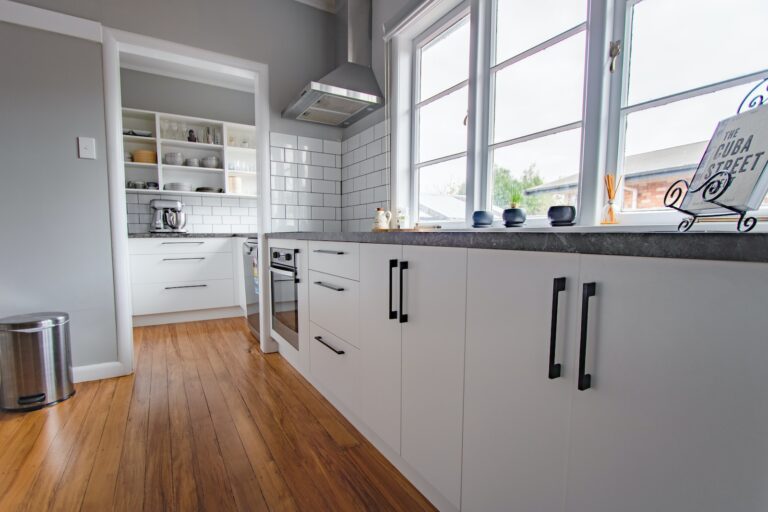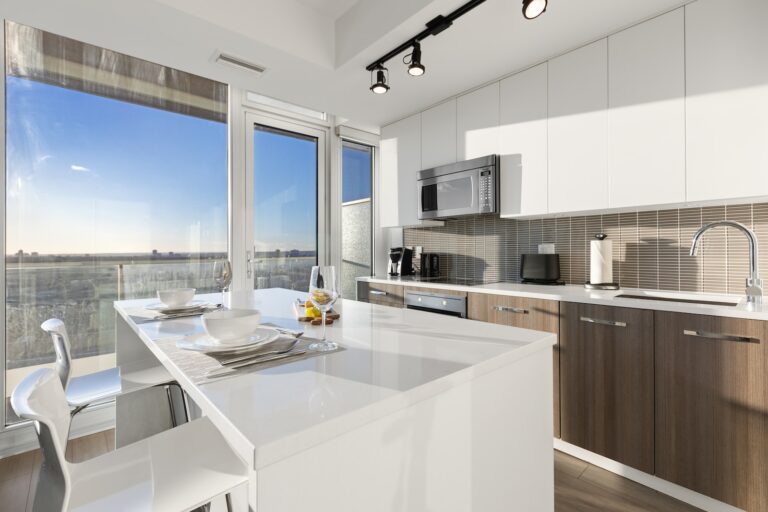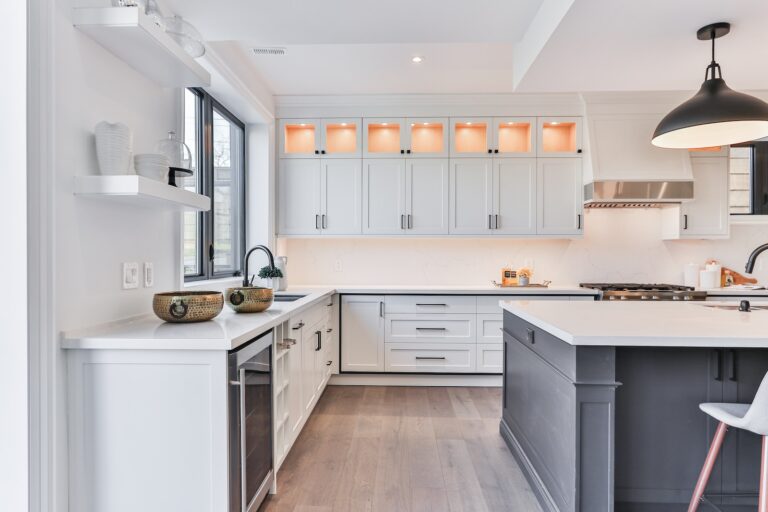How To Plan Kitchen Cabinets?
The kitchen is the heart of any home, and the cabinets are the backbone of this important space. With so many options available, planning your kitchen cabinets can be overwhelming. But fear not! In this guide, we’ll break down everything you need to know to create a functional, stylish, and efficient kitchen that will make cooking and entertaining a joy.
From measuring your space to choosing the right materials and finishes, we’ll walk you through every step of the planning process. Whether you’re starting from scratch or looking to update your existing cabinets, this guide will help you design a kitchen that perfectly suits your needs and style. So let’s get started!
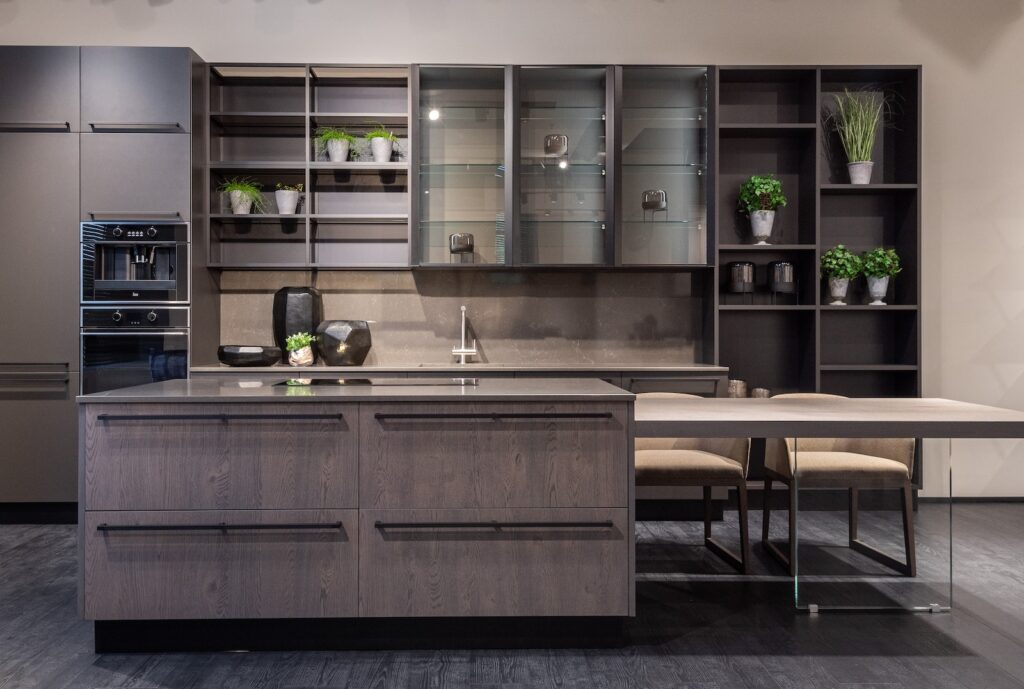
How To Plan Kitchen Cabinets?
Kitchen cabinets are one of the most important aspects of a kitchen. They not only provide storage but also add to the aesthetics of your kitchen. However, planning kitchen cabinets can be a daunting task. In this article, we will guide you through the process of planning kitchen cabinets.
Assess your kitchen needs
The first step in planning your kitchen cabinets is assessing your needs. This involves analyzing the items you have in your kitchen and the amount of space you have. You should also consider the type of kitchen you have, whether it is a large or small kitchen.
Once you have assessed your needs, you can determine the number of cabinets you need and the size of each cabinet. This will help you to create a layout that is efficient and functional.
Choose the cabinet style
The cabinet style is an important aspect of your kitchen design. You can choose from a range of cabinet styles such as traditional, modern, or contemporary. Traditional cabinets have a classic look with raised panels and decorative moldings. Modern cabinets have a sleek design with clean lines and minimalist features. Contemporary cabinets are a combination of both traditional and modern styles.
When choosing the cabinet style, consider the overall look you want to achieve for your kitchen. You should also consider the color and material of the cabinets.
Select the cabinet material
Cabinet materials are available in a range of options such as wood, laminate, and metal. Wood is a popular option for kitchen cabinets as it is durable and adds warmth to the kitchen. Laminate and metal cabinets are also durable and easy to maintain.
When selecting the cabinet material, consider the durability, maintenance, and cost of each option. You should also consider the color and texture of the material.
Determine the cabinet layout
The cabinet layout is an important aspect of your kitchen design. The layout should be efficient and functional. You can choose from a range of cabinet layouts such as U-shaped, L-shaped, or galley.
When determining the cabinet layout, consider the work triangle which includes the sink, stove, and refrigerator. The work triangle should be efficient and easy to navigate.
Choose the cabinet accessories
Cabinet accessories are important for enhancing the functionality of your kitchen. You can choose from a range of accessories such as pull-out shelves, lazy susans, and trash bins.
When choosing the cabinet accessories, consider the items you have in your kitchen and the amount of storage you need. You should also consider the cost and durability of each accessory.
Consider lighting
Lighting is an important aspect of your kitchen design. You can choose from a range of lighting options such as recessed lighting, pendant lighting, and under cabinet lighting.
When considering lighting, consider the amount of natural light you have in your kitchen and the type of lighting you need for different areas of your kitchen.
Installation
Installation is an important aspect of your kitchen cabinet planning. You can choose to install the cabinets yourself or hire a professional.
When installing the cabinets, consider the cost and time involved. You should also consider the tools and equipment required for the installation.
Maintenance
Maintenance is important for ensuring the longevity of your kitchen cabinets. You should clean your cabinets regularly and avoid using abrasive cleaners.
When maintaining your cabinets, consider the type of material and finish. You should also consider the warranty and care instructions provided by the manufacturer.
Benefits of planning your kitchen cabinets
Planning your kitchen cabinets has several benefits. It ensures that your kitchen is efficient and functional. It also adds to the aesthetics of your kitchen and increases the value of your home.
Kitchen Cabinets Vs Kitchen Island
While kitchen cabinets provide storage, a kitchen island adds to the functionality of your kitchen. Kitchen islands can be used for food preparation, dining, and storage.
When choosing between kitchen cabinets and a kitchen island, consider the size and layout of your kitchen. You should also consider your needs and preferences.
In conclusion, planning your kitchen cabinets is an important aspect of your kitchen design. By following the steps outlined in this article, you can create a functional and efficient kitchen that meets your needs and enhances the aesthetics of your home.
Frequently Asked Questions
Planning kitchen cabinets can feel overwhelming, but it doesn’t have to be. Here are some frequently asked questions and their answers to help you get started.
What should I consider before planning kitchen cabinets?
Before planning your kitchen cabinets, you should consider the size and layout of your kitchen, your budget, your storage needs, and your personal style. Take measurements of your kitchen space and make note of any appliances or features that may affect cabinet placement. Think about how you use your kitchen and what items you need to store to determine how much storage space you will need.
You should also decide on a budget and consider what style of cabinets you want. Look at pictures online or in magazines to get ideas and inspiration for your kitchen design.
What types of kitchen cabinets are available?
There are several types of kitchen cabinets to choose from, including stock cabinets, semi-custom cabinets, and custom cabinets. Stock cabinets are pre-made and come in standard sizes and finishes. Semi-custom cabinets are made to order but still have some limitations in terms of size and style. Custom cabinets are completely customizable and can be made to fit any kitchen size and style.
You can also choose from different materials for your cabinets, including wood, laminate, and metal. Each material has its own pros and cons, so do your research before making a decision.
How can I maximize storage in my kitchen cabinets?
To maximize storage in your kitchen cabinets, consider using pull-out drawers, lazy susans, and other organizational tools. Use the space above your cabinets for additional storage or display. Install shelves inside your cabinets to increase vertical storage space. Utilize the space under your sink with a pull-out organizer or tilt-out tray. Consider adding a pantry cabinet or a kitchen island with built-in storage.
When planning your cabinet layout, think about what items you need to store and how often you use them. Place frequently used items in easy-to-reach cabinets and less frequently used items in higher or lower cabinets.
What are some popular kitchen cabinet styles?
Some popular kitchen cabinet styles include traditional, modern, farmhouse, and shaker. Traditional cabinets are often made of wood and have intricate details and decorative hardware. Modern cabinets are sleek and minimalistic, often made of metal or laminate. Farmhouse cabinets have a rustic feel and are often made of wood with a distressed finish. Shaker cabinets are simple and timeless, with clean lines and no decorative hardware.
When choosing a style, consider the overall look and feel of your kitchen and the rest of your home. You want your cabinets to complement your existing decor and add to the overall aesthetic of your space.
What should I know about cabinet installation?
Cabinet installation can be a complex process, so it’s important to hire a professional if you’re not experienced in DIY projects. Make sure to measure your space carefully and order the correct size cabinets. Before installation, remove all old cabinets and appliances and make any necessary repairs to the walls or flooring. During installation, make sure cabinets are level and securely anchored to the walls. Finish off with any trim or hardware to complete the look.
Be prepared for some disruption during the installation process, as your kitchen will likely be unusable for a period of time. Plan ahead and set up a temporary kitchen in another room if possible. Once installation is complete, enjoy your new cabinets and all the storage and style they bring to your kitchen.
How To Organize Kitchen Cabinets By A Professional Organizer
In conclusion, planning your kitchen cabinets is an essential step in creating a functional and stylish kitchen. By following the steps outlined above, you can ensure that your cabinets are not only aesthetically pleasing but also meet your storage needs. Remember to consider the layout of your kitchen, the size of your cabinets, and the materials you want to use when planning your kitchen cabinets.
Furthermore, it is important to take your time when planning your cabinets and to seek the advice of professionals if you need help. There are many resources available, such as design software and online tutorials, that can assist you in creating the perfect kitchen cabinets for your home.
Lastly, don’t forget to enjoy the process! Planning your kitchen cabinets can be a fun and rewarding experience. With careful consideration and attention to detail, you can create a space that is both beautiful and functional, and that will be enjoyed by you and your family for many years to come.

